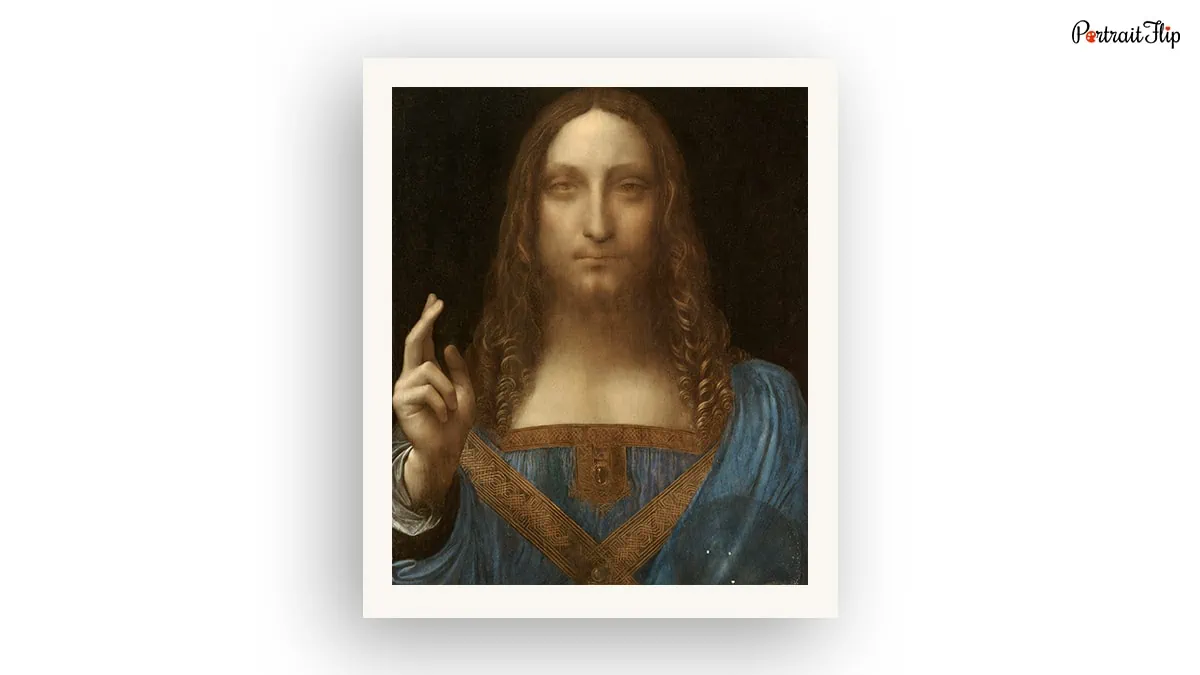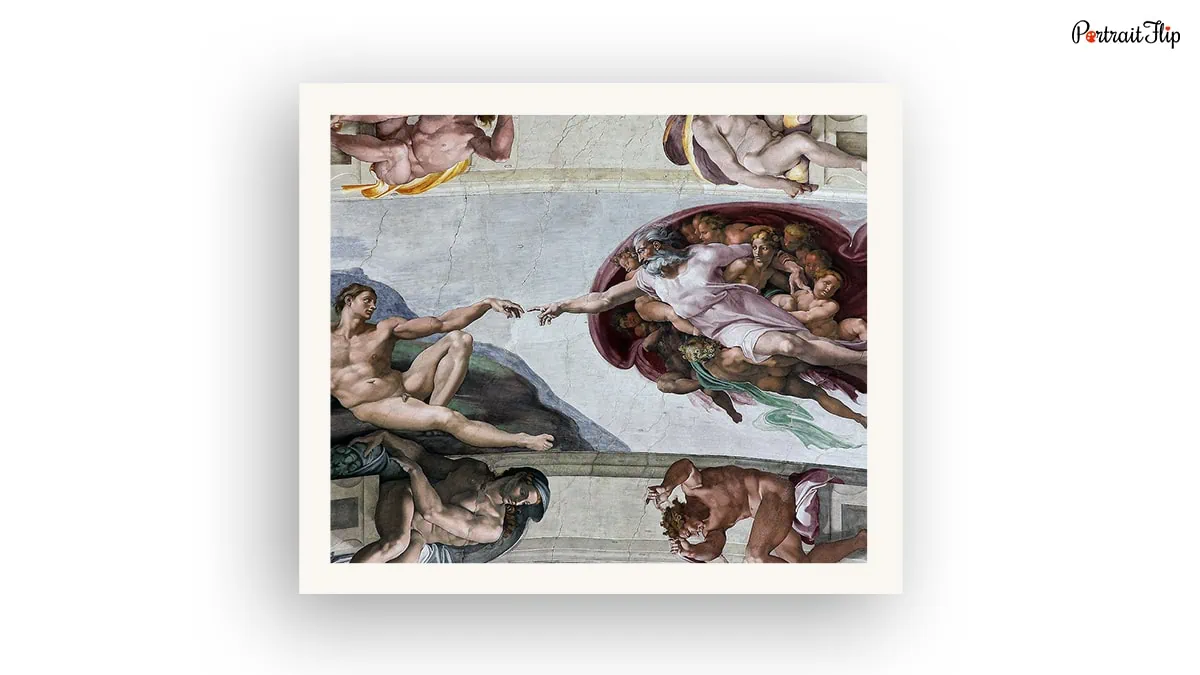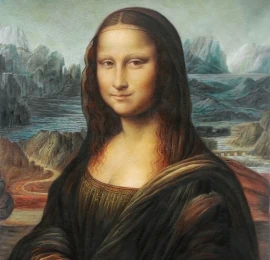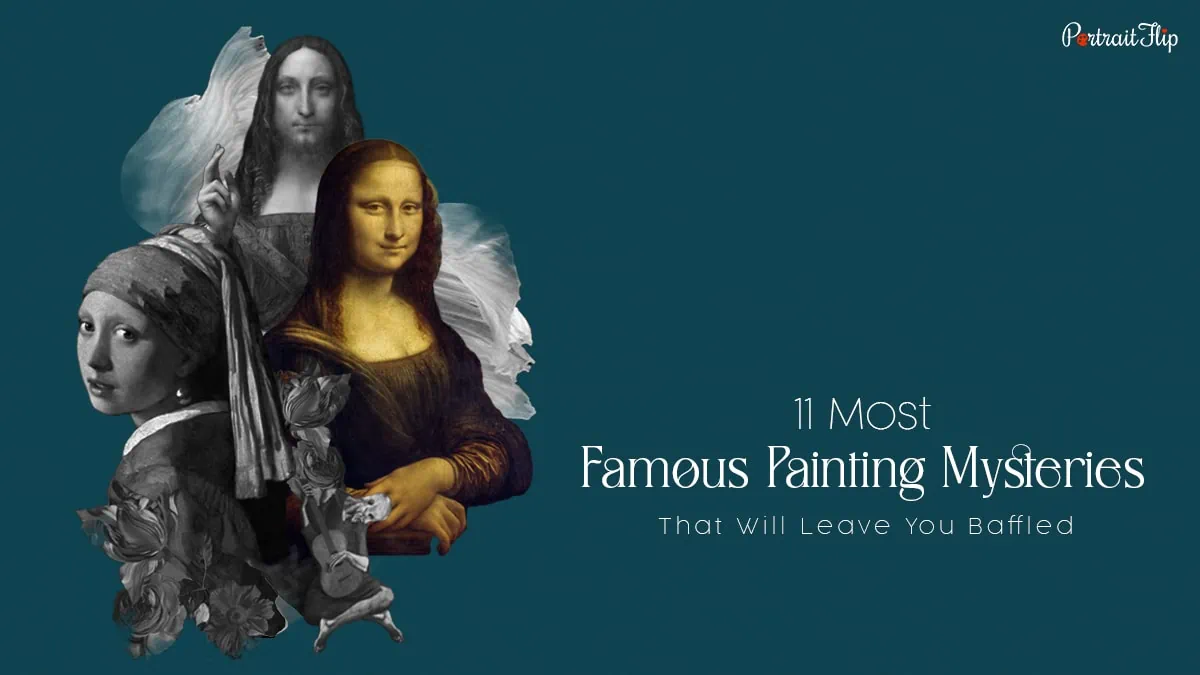Do unsolved painting mysteries keep you on the edge of your seat?
There are some intriguing mysterious paintings in history that will leave you thinking what in the world happened to them!
In fact artists themselves fancied adding a secret mysterious touch to their art that has created these painting mysteries?
This added to the uniqueness of their painting, of course.
At the same time, it gave us a peep into the signature style of the artist too.
But little did they know that even decades after their death, their secrets will remain mysteries!
I hope you’re ready to tune in because today I have gathered 11 such famous painting mysteries that will leave you baffled!
Table of contents
- Who Was the Girl with a Pearl Earring?
- Mona Lisa’s Mysterious Smile
- The Inundation of The Biesbosch
- The Mystery of Salvator Mundi
- Michelangelo’s Sistine Chapel Ceiling
- The Scream by Edvard Munch
- The Old Guitarist by Picasso
- The Night Watch by Rembrandt
- The Last Supper by da Vinci
- Mystery of the Arnolfini Portrait
- The Old Fisherman
- Greetings from the Author!
- Frequently Asked Questions
Who Was the Girl with a Pearl Earring?

I had to start with this one- The Girl With a Pearl Earring, for this girl definitely has something about her that has us all lured in!
The artist, Johannes Vermeer, created one of the most mysterious paintings that the world has ever seen!
From her innocent eyes, small, sharp nose, parted lips, and of course the infamous pearl earring, it all screams serenity!
But there is something about this girl that leaves you captured in her undecided, longing gaze.
Did you know that nobody knew her identity and Vermeer managed to keep it a secret, to this date?
This mystery painting had everyone questioning the girl’s expression.
Is her gaze seductive?
Or is it suggesting helplessness?
Or is it a particular longing for the one she is looking at, the artist?
Is she sad? Or is she in a state of immense tranquility?
Well, I could keep going, and so could you.
Because apart from these questions, we are not even sure if the girl existed beyond the painting or is just a fragment of Vermeer’s imagination!
Many have questioned if the girl was the artist’s daughter, or mistress and what really was the relationship between them.
Vermeer himself had a ghostly existence in the art world, and this famous painting mystery only adds more to his secret life!
What are your thoughts on Vermeer’s girl?
You can now own your own replica of Vermeer’s Girl With a Pearl Earring by using PortraitFlip’s Reproduction Painting services.
Mona Lisa’s Mysterious Smile

If we are talking about famous painting mysteries, how can we not discuss the infamous Mona Lisa?
This mystery painting is the creation of the great maestro Leonardo da Vinci.
Da Vinci created art that changed the art world forever, but he was also the master of creating unexplained art.
Coming back to his infamous lady, Mona Lisa, whose identity was the biggest mystery that was discussed!
Some say she is Lisa Gherardini, the wife of da Vinci’s then patron, Francesco de Gioconda.
Some say “she” is not even a woman, but is in fact a self-portrait of the artist himself.
And there also have been speculations that a woman called Mona Lisa never existed and was only imagined by the artist.
Phew, bizarre, right?
But why is there so much commotion over a painting of a woman?
This particular portrait came to be in the list of mysterious paintings just because of one thing – her mystifying expression!
One can stare at Mona Lisa for hours, for she has eyes that can stare back right into your soul.
Then she has her enigmatic smile- one that is not really a full smile, but has the power to bestow so much peace.
Her eyebrows are another mystery- many have questioned if they even exist and the artist’s intent behind it!
All in all, Mona Lisa is a painting that has been one of the most famous art mysteries and still continues to be!
The Inundation of The Biesbosch

One of the oldest painting mysteries can be dated back to the 1400s, when the legend of The Inundation of The Biesbosch occurred.
This legend goes into the history of art because Lawrence Alma-Tadema made a soul-crushing painting out of it!
So what is the story behind this mysterious artwork?
The scene in this mysterious painting in history is from the flood that occurred in the Netherlands in the year 1421.
Apparently, it is said that the lives lost in this flood were speculated to be up to 10,000!
When nature’s fury eased, the people who took shelter came out to investigate whatever was left.
And it is then they witnessed the heartwrenching sight!
A baby’s crib was floating near the shore.
The baby was fast asleep. But on the corners of the crib was a cat.
This cat kept leaping onto the corners of the crib, to keep the crib afloat!
The story highlights that the cat managed to keep the sheets of the crib and the baby dry and safe from the waters!
And it is this story that in fact got this painting in the list of painting mysteries!
The Mystery of Salvator Mundi

Salvator Mundi, which also translates to “Savior of the World” is a portrait drawn by the famous artist, Leonardo da Vinci.
This is one of the painting mysteries that has also been known to be one of the most controversial paintings!
But why is there so much commotion over a beautiful portrait of Jesus?
Firstly, there were many criticisms of the painting of Jesus itself, stating that it did not look like Jesus.
The artist was also accused of choosing poor expressions for the “Savior of the World”!
Apart from these opinions of acceptances, the painting was also lost in the 17th century.
Did you know that this mysterious painting in history was lost for over 300 years and was only found in the 20th century?
When it was found too, it became one of the most expensive paintings to be ever sold!
Even when the mystery painting resurfaced, its originality and authenticity were questioned given its poor tattered form.
Experts were adamant on saving the portrait, and ended up doing a lot of restoration.
Now, when this happened, people asked that if it had once been Leonardo’s, can it still be considered his?
What is your stance on this?
Michelangelo’s Sistine Chapel Ceiling

Now let us look at one of the famous painting mysteries from a Renaissance artist that will leave you shell-shocked!
This most mysterious painting in the world is by Michelangelo whose brilliance is displayed and hidden at the same time in his infamous ceiling painting.
How many of you knew that he was not just a brilliant artist, but also someone who loved science and had immense knowledge in it?
Especially in human anatomy!
Did you know that the artists had planted many secrets in his ceiling paintings?
How about I tell you an unexplained art secret behind Michelangelo’s “Creation of Adam”?
This unexplained painting hides the best example of his infamous anatomical sketches.
You will see that the God figure is hovered by angels and flowy cloaks, that in fact, is shaped like a human brain!
What does this signify?
We can decipher this as when God made the first man, he also blessed him with the knowledge of the world.
Which is why the human brain can be seen in this painting.
It does not stop there. There are many such anatomical sketches that historians later discovered.
Many believed that Michelangelo did this almost as a rebellious act.
Theorists who have studied his paintings believe that these anatomical sketches were an indirect attack to the church who did not approve of science.
Our Michelangelo was a very smart chap, so smart that it is even believed that he put in a few self-portraits in these paintings.
Did you know that Michelangelo drew all the paintings standing and looking upwards?
This apparently caused him a lot of physical discomfort which was obviously reflected in his behavior!
Because of the many secrets this painting holds, it continues to be one of the world’s biggest mysterious paintings!
The Scream by Edvard Munch

Let us now look at one of the painting mysteries that has spookiness written all over it, The Scream!
The genius behind this masterpiece is one of the expressionist artists, Edvard Munch.
The Scream is known to be an amalgamation of the outer nature agony and the artist’s inner mental anxiety.
The horrifying expression on the subject’s face, which is believed to be the artist himself, depicts an unpleasant experience.
This mysterious painting is one among the widely discussed art as it reflected the inner human turmoil.
It was also well-known that Munch was suffering from mental illnesses and he openly talked about his overwhelming anxiety!
But the mystery behind this is not the intent of the painting.
Experts and museum authorities were astounded when they found a weird and rather disturbing inscription on the painting.
“Can only have been painted by a madman”
Authorities doubted if it was a sign of vandalism, a direct attack at Munch!
Later, the authorities from the National Museum of Norway confirmed that the inscription was written by the artist himself!
Well, I am not really surprised, but are you?
There were also speculations over this, because researchers doubted if an artist would write such a statement on his own art.
So well, that remains a mystery!
The Old Guitarist by Picasso

Mystery in art does not spare the cubist artists too, and their art became the greatest mysteries of all time!
One of the most mysterious paintings in the world is by the founder of cubism, Pablo Picasso!
This particular painting was part of his Blue Period collection, when he was known to have been suffering from immense poverty and poor mental health!
The Old Guitarist is one of Picasso’s most phenomenal works, but is also a mysterious painting for the secret it holds.
This mysterious artwork is currently at the Art Institute of Chicago.
When the painting was exposed to infrared rays because of shadows forming on it, the researchers got the shock of their lives!
The x-rays revealed some hidden images within the same painting.
A nude woman was the most prominent, and there were also two other figures that could not be understood.
This mystery painting is still unsolved but historians have come up with a theory.
Picasso’s Blue Period was known to be a suffering time.
He lost his friend, was in great poverty and suffered from depression.
Because of this he was also known to have been painting over a canvas over and over again.
Again, this is not a solid explanation and only a theory, the truth is still unknown!
The Night Watch by Rembrandt

The Night Watch is one of the painting mysteries created by the artist Rembrandt Van Rijn.
But why is this a mysterious painting?
It is considered mysterious because of its unexplained art style, hidden symbolism, and several meanings that are weaved along with the painting.
One look at it and what do you see?
Yes, the little angel-like figure, with a flowy white dress and long gold locks, and supposedly the only woman figure in the whole painting.
There were questions raised on who exactly this angel-like individual was in the painting.
And why does her face seem displeased, and almost like she does not want to be seen by anyone?
The painting is believed to be a representation of the Dutch militia but then every individual in the painting seems peculiar.
This mystery painting also raised questions on Rembrandt and his intention behind painting such a volatile painting.
Apparently, it is also said that the title for the painting is inappropriate because the event happens during the day?
Some even believe it must have been an innocent experimental painting.
But who really knows?
Recommended Read: 12 Rembrandt Paintings that Exhibit the Baroque Period.
The Last Supper by da Vinci

The next one among the painting mysteries is one of the most famous artworks by Leonardo da Vinci.
This mysterious art piece is none other than The Last Supper!
Are you wondering what kind of mystery this artwork can have?
The Last Supper is known to be the artistic masterpiece by da Vinci where he creates one of the most phenomenal events from the Bible.
Did you know that the original painting is not the one at the Royal Academy of Art, London?
Yes, that painting of The Last Supper was created by one of his disciples, Giampietrino.
The original painting is on the walls of the church, Santa Maria Delle Grazie!
Another one of the painting mysteries this artwork holds is that there were hidden musical notes within the painting, which when tested created a short tune!
An extraordinary musical tune for an extraordinary painting!
Because of years of maintenance and restoration, researchers believe that only a small part of the painting is truly Leonardo’s!
I wonder what the painter would have to say about that if he was alive now.
Suggested Read: 13 Famous Paintings of Jesus That Reveal Christ’s History!
Mystery of the Arnolfini Portrait

This is one of the painting mysteries that showcases the brilliance of the artist’s techniques.
The Arnolfini Portrait was painted by Jan van Eyk, who is known to be a pioneer of the Early Netherlandish paintings.
He is infamous for creating paintings that have extremely minute details that are realistic in nature and are depicted by surface effects and natural light.
In this famous painting, there are hidden symbols and meanings that one would not notice in the first look.
Who were these couple?
The couple in this mysterious painting was identified as a merchant, Giovanni di Nicolao Arnolfini and his wife, Giovanna Cenami.
The most intriguing part of this painting is the small, round enigmatic mirror behind the couple.
Did you know that this mirror changes the way we view the painting completely?
In fact, it destroys the fourth wall of the viewer, because the room is expanded through the mirror, giving a more broad view and better understanding of this mystery painting.
This mystery painting seems to be a betrothal of the couple, and they have company in the room!
Through the mirror we can see two more figures who seem to be the witness of the couple’s betrothal.
But even apart from this, I still find a lot of hidden symbolism that makes this painting one among the most mysterious paintings of the world!
The Old Fisherman

I saved the best for the last, this is a personal favorite among the list of painting mysteries I curated!
Tivadar Csontvary Kosztka’s painting Old Fisherman can be considered as one of the most famous mysterious paintings in history.
Yes, it is a simple painting, but the mystery lies within the artist’s techniques and symbolism.
The man is with a distorted face, and his expressions are not very clear!
Why is this so?
This is because the face is said to have two hidden symbols within it.
If you mirror both sides of the faces, you will get two completely different expressions.
By mirroring the left side, we see a calm man with his hands folded, almost in a praying position.
The seawater around him is calm too!
On the other hand, if you mirror the right side, you will see a darker, devilish face.
You will also notice how the seawater around him is disturbed and violent.
This was apparently done by the artist to show the good and bad side of humans!
But I am sure, if it was not specified, would you notice this hidden symbolism within this famous mysterious painting?
And do you think there are more?
After all, some mysteries are meant to stay mysterious!
Especially the mystery in art!
Do you wish to make any of these painting mysteries your own?
You can own an exact replica of any famous painting through PortraitFlip’s Reproduction Painting services.
Greetings from the Author!
Hola Readers,
I hope you enjoyed reading my contribution on this very interesting topic and uncovered secrets that you never heard before!
Thank you for your valuable time and I look forward to hearing from you in the comments.
Until next time
Cheers xx
Frequently Asked Questions
Leonarda Da Vinci’s masterpiece Salvator Mundi is the most expensive painting sold till date. It was priced at a towering $450 million in an auction.
The Gardner museum theft still remains the most talked about painting mystery of all time. Stolen artworks like The Storm of the Sea of Galilee are still not found.
When they performed an infrared scan on Pablo Picasso’s old guitarist, they found three other faded figures of painting within it.






